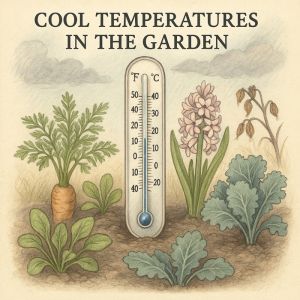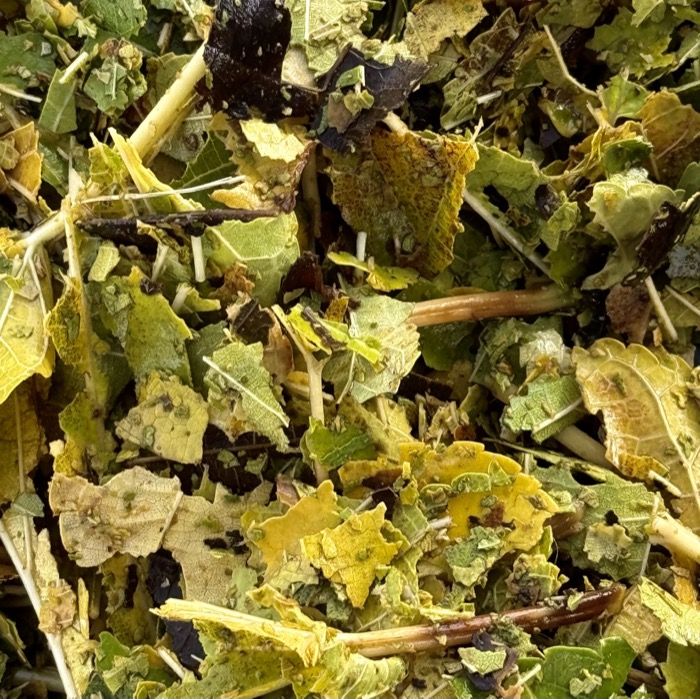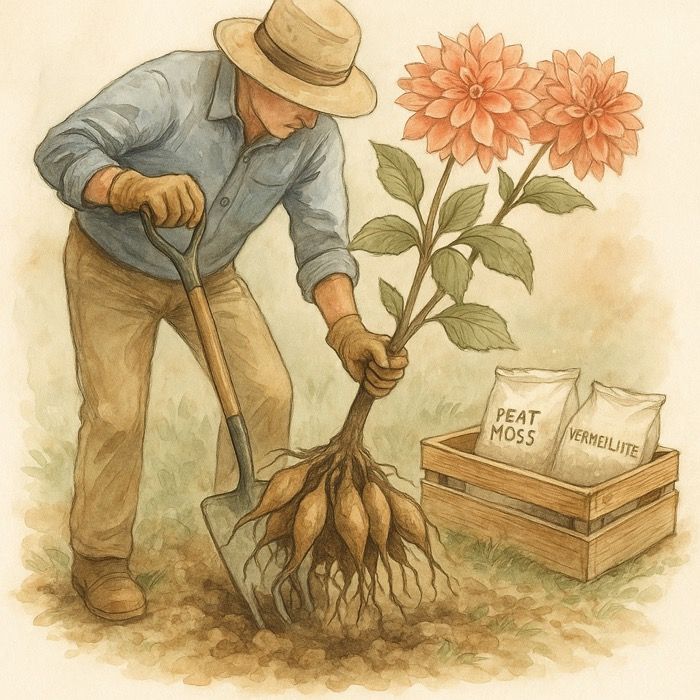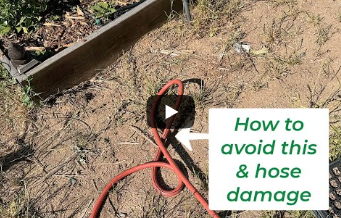Cool Temperatures in the Garden – What Really Happens When Things Chill Down
When the air turns crisp and the soil loses its summer warmth, gardeners can feel the change long before frost arrives. Cool temperatures reshape nearly every process in the garden, from how fast plants grow to which insects stick around. Understanding what really happens when things cool down can help you plan, protect, and even make the most of this slower season.
Slowing Growth and Sweetening Flavor
As temperatures drop, plants slow their metabolism. Photosynthesis, nutrient uptake, and root expansion all ease back into a gentler rhythm. For cool-season vegetables such as lettuce, spinach, kale, peas, and broccoli, that slower pace is perfect. The chill encourages compact, tender leaves and concentrates sugars, producing sweeter harvests. Warm-season favorites like tomatoes, peppers, and basil, however, dislike the chill. Their roots become sluggish and their fruit set can stall completely.
Flowering and Bloom Delays
Many flowering plants rely on warmth to trigger blooms. When cool weather lingers, blossoms appear later, and in some cases buds may drop before opening. Yet bulbs and certain perennials depend on this cooling period to bloom the following spring. Tulips, daffodils, hyacinths, and peonies all need a stretch of chilly weather to complete a process called vernalization. Without it, they fail to flower properly the next year.
Changes Beneath the Surface
Cool air eventually seeps into the soil. Once soil temperatures fall below roughly 50°F (10°C), microbial life slows. Earthworms burrow deeper, bacteria rest, and organic matter breaks down more gradually. Nutrients become less available, and roots respond by pausing growth. For gardeners, this means it’s best to plant perennials or trees well before soil temperatures dip too low, allowing roots time to establish before winter sets in.
Pest and Disease Shifts
The silver lining to cool weather is fewer chewing and sucking pests. Aphids, beetles, and mites retreat as the days shorten. Unfortunately, damp and cool conditions can also favor fungal diseases, especially on decaying leaves or crowded plants. Clearing plant debris and improving airflow now can prevent spring problems later.
Using Cool Weather to Your Advantage
Rather than seeing cooler temperatures as the end of the gardening season, think of them as a pause. It’s the perfect time to clean beds, add compost, spread mulch, and plan for next year. Mulch stabilizes soil temperatures and protects roots from freeze-thaw cycles. Cold frames or simple row covers can extend the harvest well into fall by trapping just enough warmth for hardy greens and herbs.
Master Gardener Tips
Cool temperatures are nature’s pause button. Instead of fighting them, work with them.
• Build soil health while microbial life rests – add compost, manure, or leaf mold to feed spring growth.
• Water deeply before the first hard freeze so roots enter winter hydrated.
• Protect tender perennials with a blanket of straw or shredded leaves.
• Use this quiet time to review what thrived and what struggled this year, setting the stage for a stronger season ahead.
Cool weather doesn’t mean your garden is shutting down – it’s preparing. With a little planning and protection, you’ll greet spring with healthy soil, rested plants, and a garden ready to wake up refreshed.
More From Our Master Gardener
Recent Posts

Turn Fall Leaves into Garden Gold 🍂 | The Simple Trick Every Gardener Should Know

When and How to Dig Up Dahlias – The Best Time, Storage, and Overwintering Guide for 2025 Blooms

When and How to Dig Up Peonies – A Step-by-Step Guide for Vibrant Blooms

Best Herbs to Plant in October 2025 – Fall Herb Gardening in Raised Beds Made Easy

The Bee Underground – Meet the Solitary Bees Living Beneath the Soil














